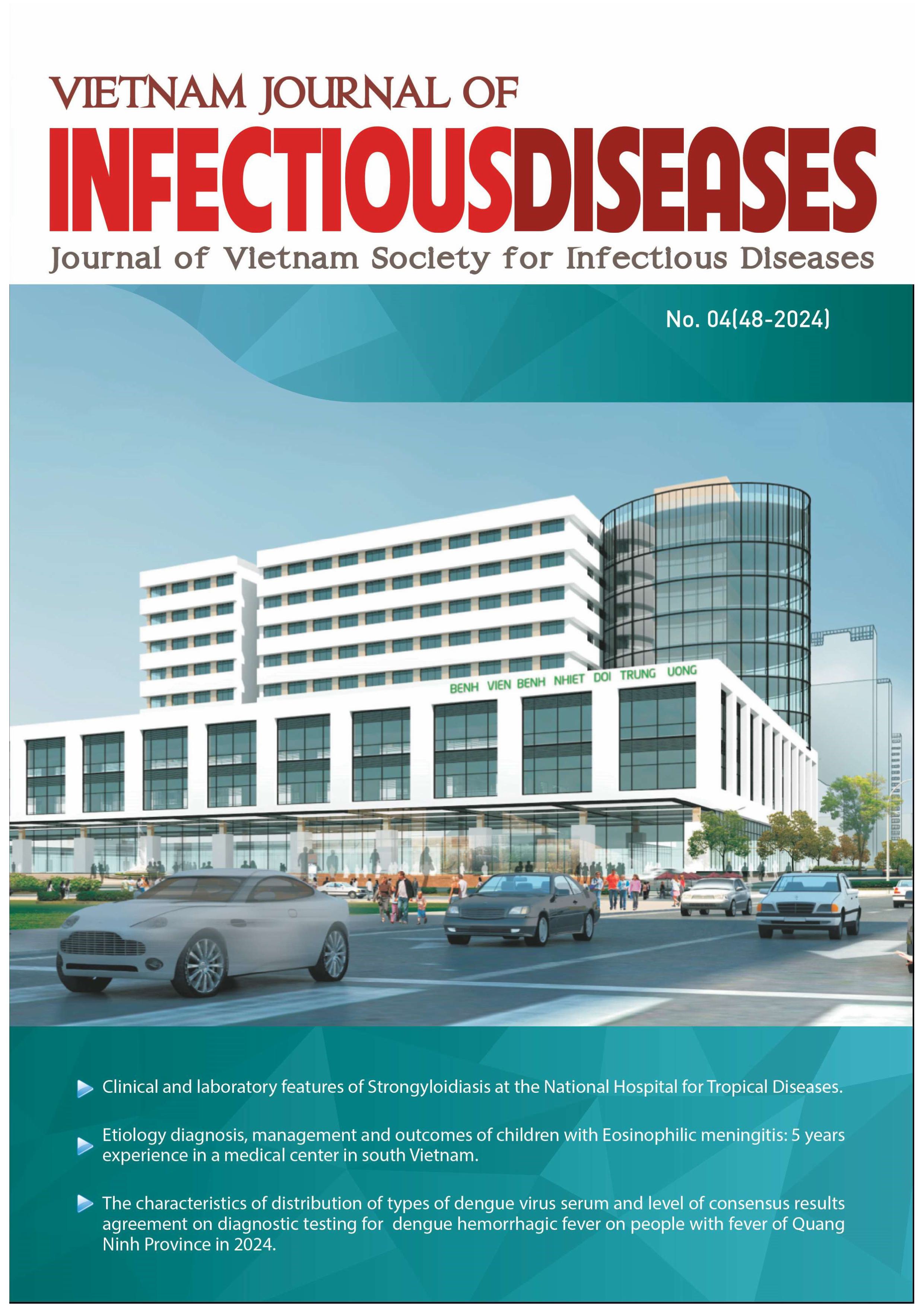CAUSES OF SEPSIS AND USING EMPIRIC ANTIBIOTICS IN PATIENTS WITH SEPSIS AT THAI NGUYEN NATIONAL HOSPITAL
Nội dung chính của bài viết
Tóm tắt
Objectives: Describe the causes of sepsis and antibiotic resistance of isolated bacteria in patients with sepsis treated at the Department of Tropical Diseases - Thai Nguyen National Hospital (2020 - 2023).
Subjects and method: Study on 114 patients diagnosed with sepsis treated at the Department of Tropical Diseases at Thai Nguyen National Hospital in Viet Nam from January 1, 2020 to August 16, 2023. Descriptive, retrospective study.
Results and conclusions: A our specific study conducted 114 patients with sepsis at Thai Nguyen National Hospital in Vietnam. Here's a summary of the key points: Gram-negative bacteria, especially Escherichia coli and Klebsiella pneumoniae, were found to be the most common causative agents of sepsis in our study.
Staphylococcus aureus was the most common Gram-positive bacterium. Empiric antibiotic treatment often
involves combinations of antibiotics to cover a broad range of potential pathogens. Cephalosporins and penicillins were commonly prescribed, with carbapenems also used. The data on the duration of antibiotic
treatment indicates that a significant percentage of patients received antibiotics for 10 - 15 days, and
some were on antibiotics for over 15 days. The duration of antibiotic treatment should be individualized,
considering various factors like the patient's condition, type of infection, and diagnostic tools available.
Reducing the duration of antibiotic treatment is suggested as an effective strategy to combat antibiotic
resistance. These information are valuable for improving sepsis management and antibiotic prescribing practices in our hospital.
Chi tiết bài viết
Từ khóa
Sepsis, empiric antibiotics, resistance
Tài liệu tham khảo
2. The Ministry of Health. Guidelines for diagnosis and treatment of some infectious diseases. Issued together with Decision No. 5642/QD-BYT dated December 31, 2015 of the Ministry of Health.
2015:79-86.
3. R. P. Dellinger, Andrew Levy Mm Fau - Rhodes, Djillali Rhodes A Fau - Annane, et al. Surviving Sepsis Campaign: international guidelines for management of severe sepsis and septic shock, 2012. (1432-1238 (Electronic).
4. A. Rhodes, L. E. Evans, W. Alhazzani, et al. Surviving Sepsis Campaign: International Guidelines for Management of Sepsis and Septic Shock: 2016. (1432-1238 (Electronic).
5. WHO. World Health Statistics 2022 - Monitoring health for the SDGs. 2022:33.
6. A. H. Stephen, R. L. Montoya,A. R. Aluisio. Sepsis and Septic Shock in Low- and Middle-Income Countries. (1557-8674 (Electronic).
7. M. L. Martínez, E. P. Plata-Menchaca, J. C. Ruiz-Rodríguez,R. Ferrer. An approach to antibiotic treatment in patients with sepsis. (2072-1439 (Print).
8. A. Amanati, S. Sajedianfard, S. Khajeh, et al. Bloodstream infections in adult patients with malignancy, epidemiology, microbiology, and risk
factors associated with mortality and multi-drug resistance. (1471-2334 (Electronic).
9. Fupin Hu, Demei Zhu, Fu Wang,Minggui Wang. Current Status and Trends of Antibacterial Resistance in China. Clinical Infectious Diseases.
2018; 67(suppl_2):S128-S134.
10. F. Hu, Y. Guo, Y. Yang, et al. Resistance reported from China antimicrobial surveillance network (CHINET) in 2018. (1435-4373 (Electronic).
11. V. Q. Dat, T. T. Dat, V. Q. Hieu, K. B. Giang,S. Otsu. Antibiotic use for empirical therapy in the critical care units in primary and secondary
hospitals in Vietnam: a multicenter cross-sectional study. (2666-6065 (Electronic).
12. D. S. Y. Ong, C. H. van Werkhoven, O. L. Cremer, G. E. Thwaites,M. J. M. Bonten. Is a randomized trial of a short course of aminoglycoside
added to β-lactam antibiotics for empirical treatment in critically ill patients with sepsis justified? (1469- 0691 (Electronic).
13. Y. Tang, X. Wu, Q. Cheng,X. Li. Inappropriate initial antimicrobial therapy for hematological malignancies patients with Gram-negative
bloodstream infections. (1439-0973 (Electronic).


